Last Updated on June 20, 2024 by Michelle
New life is exploding on the homestead this week, which reminds me I wanted to share with you all a huge mistake I made last spring when incubating chicks (hoping no one else makes the same mistake). But even if you’re not incubating any eggs this spring, scroll down for the most adorable baby goat pictures ever.
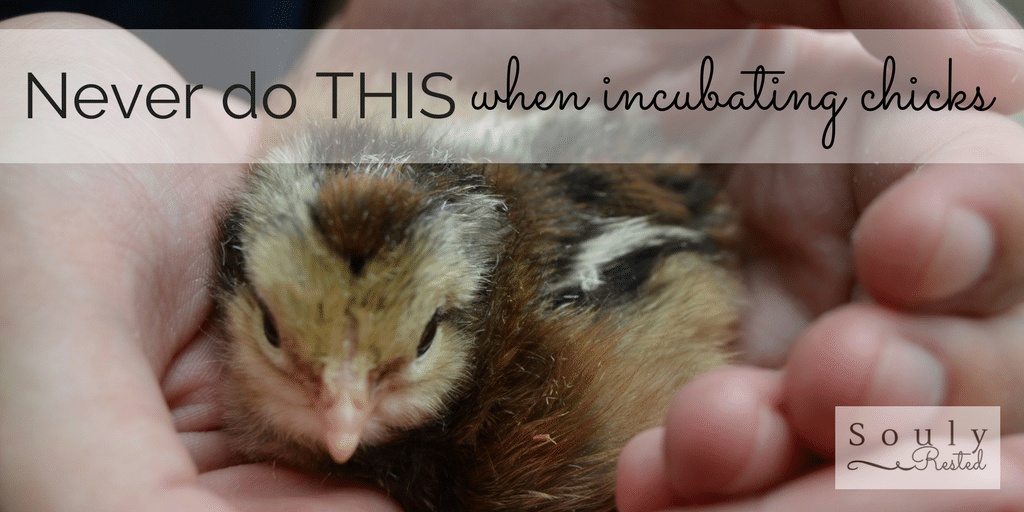
If you’re following on facebook or have checked out my youtube channel recently, you’ve probably seen more baby bovine cuteness than you can stomach this week, since we’re baby goat sitting for friends. And then there’s our adorable story, with a very happy ending, about our missing-turned-boody hen, Eagle.
Scroll to the end, if you wanna see Eagle and hear her story. Then go here to read all about this broody hen and how I convinced her to adopt more chicks. (And why I wanted to.)
Go here if you’d like to see the products I recommend for raising your own chicken.
But on top of broody chicks, broody ducks, and new baby bunnies, we’re incubating chicks and ducklings, and they’re due to hatch this week. That got me thinking about last year’s incubation and my huge mistake. Hopefully sharing it here will help others avoid the same blunder and save some baby chicks in the process.
So here I am yet again, pouring salt in wounds, and rehashing my silly mistakes, because I really do hope that sharing about my mistakes can help you avoid similar problems.
If you wanna incubate your eggs, you’ll need your eggs to be fertile, so you must have a rooster on your farm as well. If so, you may want to hop over to this post to avoid another huge, deadly mistake that I made with my rooster and my chicks when they were a few months old.
Should I let eggs sit before incubating?
I knew that the earlier the eggs were incubated, the better. While it’s fine to keep them a few days, until you have enough, eggs shouldn’t sit for too long before incubating.
So I kept them for only a few days or less, until I had collected enough fresh eggs to fill the incubator.
My Huge Mistake When Incubating Eggs
Last year about this time things were going well. It was our second year of incubating chicks, and we felt like we knew kinda knew what we were doing. Our first year the only problem we faced was one adorable spraddle-legged chick. Thanks to the Chicken Chick’s awesome site, this post helped us offer our tiny cutie some late-night rehab, via taped-up legs and standing assistance, and she is thriving today.
Fast forward to last year. The first baby made herself known, loud and clear, as soon as she was born. We watched her through the glass for many hours. Then we swiftly took her out, and placed her under the brooding light when she was ready. But her incubator-mates didn’t do much. For a long while. Most eggs showed signs of the chicks working their way out, but no one got further than an exposed foot or a tiny bit of a beak.
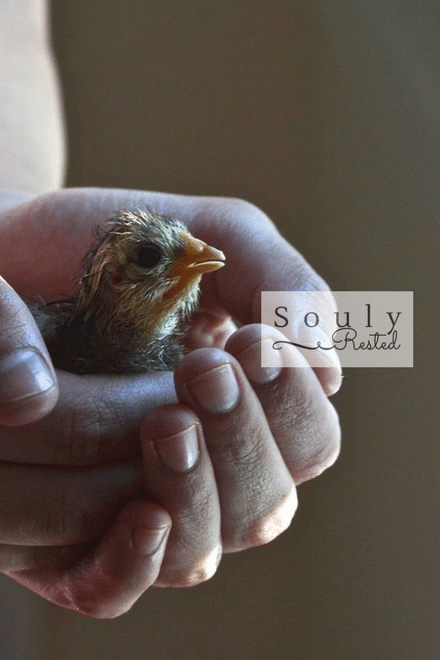
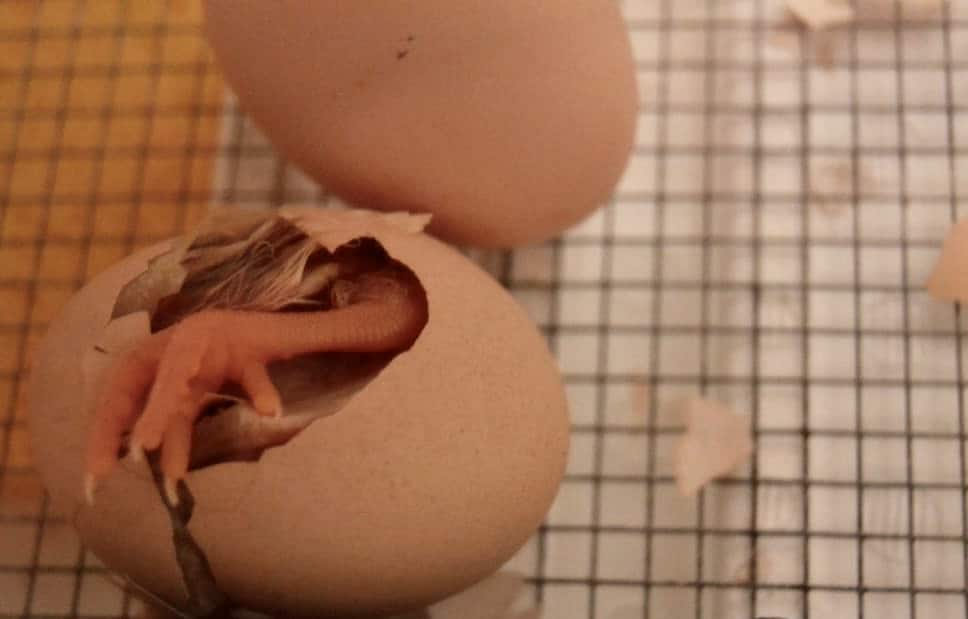
I don’t know if one egg in the lot was contaminated and got cracked while the first little guy was hopping around in there, or if the first baby’s shells, which we left sitting in the incubator, harbored bacteria. (After all, bacteria thrive in a warm, humid environment.) But either way, we realized too late that the incubator was a breeding ground for a bacteria that was deadly to the little chicks. All the rest of the sweet feathered siblings died in their shells.
What I’m Doing Differently This Year
So this year as soon as a chick is ready to come out of the incubator, I’m gonna be sure to remove all the pieces of her egg with her. Removing the broken egg shells will not only lessen the likelihood of deadly germs, but also remove the potentially sharp-edged pieces. That way the little balls of cuteness won’t possibly cut themselves on jagged shells when they’re squirming around, trying to learn how to use their legs.
If you’re like me, you’re wondering how to remove the potentially harmful shells without disturbing the perfect heat and humidity that’s inside the incubator. After all, every time you lift the lid, the temperature and humidity levels drop. The best answer is a really simple one: do it quickly. Work together with one or two family members; one holds the incubator lid while another removes the chick and yet another removes the pieces of shell. The incubator should recover to optimal temperature and humidity very quickly if you keep the lid off for a minimal few seconds.
If you’re still worried that that just may not be “technical enough,” as I was, you can try this advice I found from Anna, on this post at The Walden Effect: “I heat up some water until it’s steaming and top off the wells when I take off the incubator lid since the hot water will keep the temperature in the incubator high and will also increase the humidity drastically. ”
Go here if you’d like to see the products I recommend for raising your own chicken.
Three Tips for a Healthy Incubator
Here are three simple tips to make sure you don’t let bacteria harm your chicks:
- Place only unsoiled eggs in the incubator to begin with. Dirty eggs are more likely to harbor germs. Okay, that’s a no-brainer. But the next one may surprise you…
- Use only unwashed eggs. Yep, you read that right. You want unsoiled eggs that are also unwashed. You see, an egg is coated with an amazing, protective coating, called “bloom,” right before the hen lays the egg. This bloom actually keeps harmful bacteria out of the egg. (See #8 of my 10 Fowl Facts for more information.) So as well-intentioned as the act might be, washing the eggs would be counterproductive.
- Remove old shells from the incubator as you remove each new chick, so bacteria doesn’t have a breeding ground for growth.
Now for Those Adorable Baby Goat Pictures
If you’d like even more details about incubating chicks (and ducklings), I recommend this post by my friend and fellow homesteader, Kathi. (And I LOVE what Kathi does to candle her eggs that won’t cost you a penny. Why didn’t I think of that?)
Meanwhile, I promised right up front this week that I would share some stinkin’ cute baby goat pictures.
With our beautiful Scout, our Holstein heifer who’s due to calve this summer, getting bigger every day, we’ll have plenty of fresh milk daily on the homestead by this summer. So goats will probably never be a permanent addition to our homestead menagerie. But we are tickled to get to be the home-away-from-home for two sweet, 1-week-old baby goats this week while friends are away.
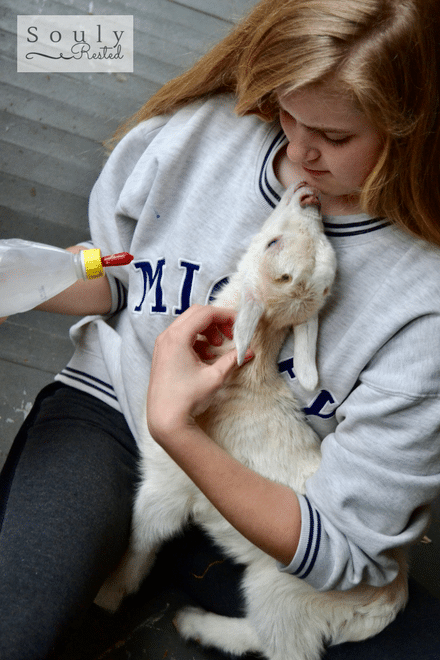
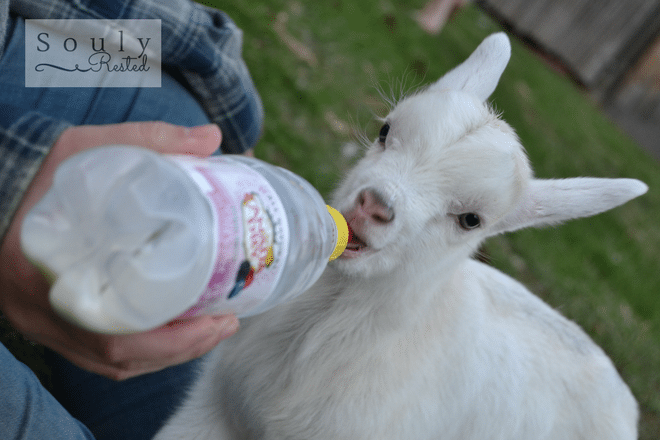
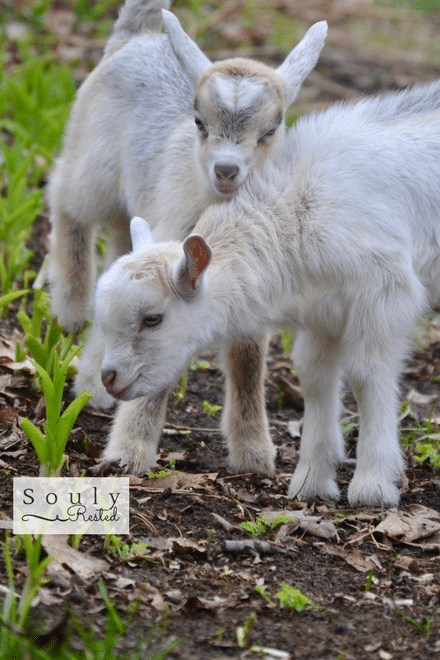

And That Video I Promised, About a Hen Named Eagle
Truly, spring on a homestead is always full of surprises. Thankfully Eagle’s surprise was a good one:
Disclosure: This post contains affiliate links.
If you’re a homeschool family and want to incubate eggs as a school science project, try finding a local 4H group or farm where you can borrow the eggs and incubators for a one-time fee. You get to care for the incubator, watch the chicks hatch, and keep the sweet babies for a few days before the farmer collects everything back from you.
If you’re a homesteader, and want to purchase your own incubator and supplies, go here for my full list of chicken-related products I recommend, including a top-of-the-line incubator, if you’re looking for one that will serve you well for decades.
And, of course, if you wanna incubate your eggs, you’ll need your eggs to be fertile, so you must have a rooster on your farm as well. If so, you may want to hop over to this post to avoid another huge, deadly mistake that I made with my rooster and my chicks when they were a few months old.
Pin this for later!
Click on the image below to pin this post.
Find out why SoulyRested was considered to be one of the One of the Top Homesteading Blogs.
Glance at my Resource Page if you’d like to get a glimpse of all the supplies I use and recommend for everything from gardening, to homeschooling, to chicken care, to nature journaling, to maple syrup making.
Download my 8-page Pantry Checklist and have instant access to the best ingredients and exclusive discounts.
I’d love to connect!
To find me in some other neck of the woods, just click any (or every!) icon below:

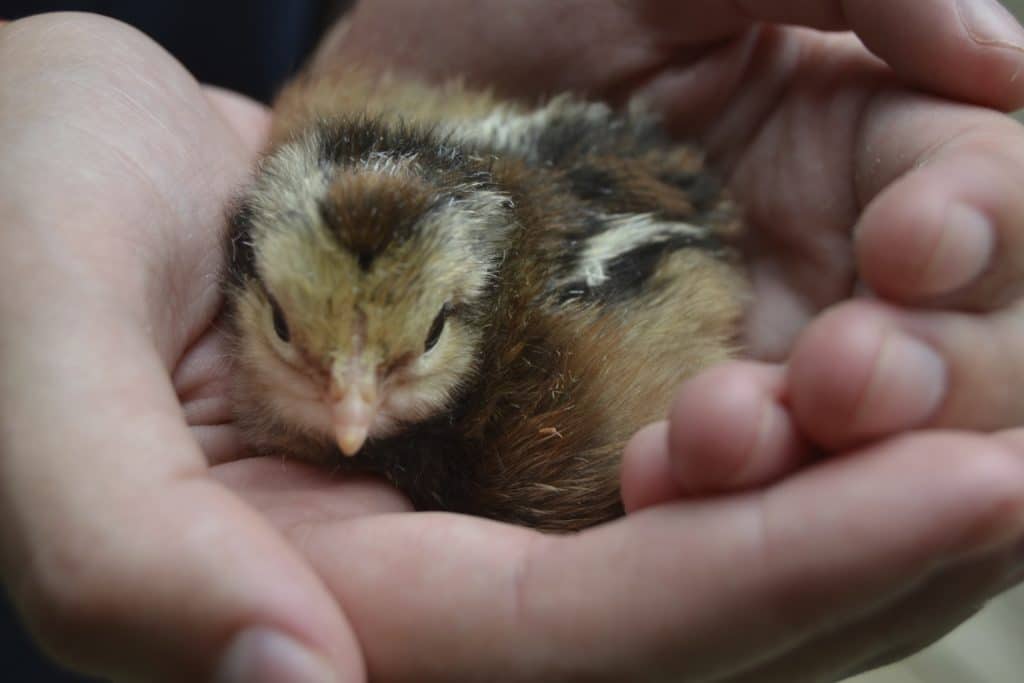
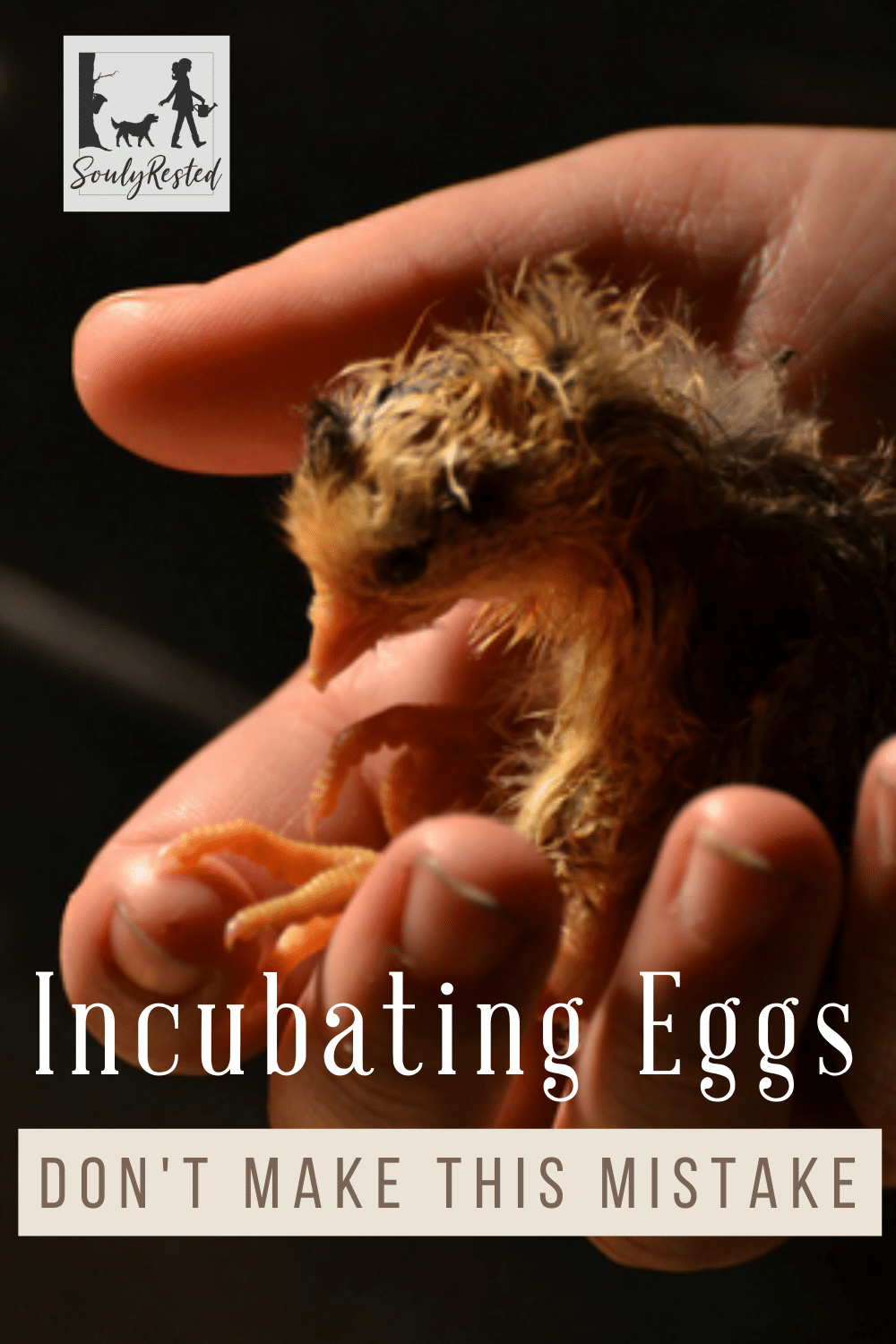





Can I offer some other advice? It was more likely that the sudden vaccum in humidity and temperature when you opened the incubator caused the chicks to shrink wrap in their shells. Even if you pumped it up first- (which doing that causes problems on it own) Especially if they were already pipped. Also- too high humidity can drown the chicks in their shells when they pip the inside of the egg. I don’t open the incubator for anything, not candling, nothing. Leaving the chicks inside while the others hatch is ok, even if we are dying to assist them or ‘make them more comfortable’ in some way–the best way is hands off and let nature take its course, they will survive. If there were bacteria in there and the chicks are not stout enough to pull through it, you may not want to introduce a weak link into your flock in the long run anyway, as harsh as it sounds. Truly, the worst bacteria we could introduce to the eggs would be on our own hands and nails when handling during hatch. If you are worried about bacteria– best way to handle it– when I am collecting eggs for incubation I make a solution of 1/3 regular old gold listerine to 2/3rds water and spray the eggs before incubation. I had so many losses with my styrofoam incubator at first, (little giant) and after the fact I read that they are horrible for incubating eggs and the digital read outs for humidity and temperature are WAY off. Not to mention it has temp spikes for no reason, especially when one is hatching or at night. But I did not let that deter me and I researched and read and looked at every forum that had people that had experience with them for months, and I tweaked what I was doing over and over until the last 2 years hatches I finally have a system that works! I average an 85% hatch. First order of business– buy an incubator hygrometer/thermometer that has a probe you can insert inside the vent hole of the Little Giant, and calibrate it. Google how with salt and a ziploc. Then get a good old fashioned metal incubator therm to keep inside to check the others. Then the weirdest thing I will tell you– don’t put any water in it until lock down. Yes, a dry hatch. If your incubator stays at least 25% humidity on its own for 2 days without water, that is all you need in these kind of incubators. When you lockdown the incubator- fill canals with tap warm water slowly with straws thru the vent holes until you have 65-70% humidity and maintain that with adding a little every so often. Yep, it takes alot of babysitting. I paid good money for the thing and I was too stubborn to give up on it! If all this sounds like too much– my best advice would be to buy a Brinsea! 🙂
Thanks, Jeanette, for your in-depth, thoughtful response. I too have done loads of reading and research on incubating eggs, and I have come up with very different research information and very different techniques than your own. I’m especially shocked about your technique of spraying the eggs with Listerine and water. That would definitely destroy the bloom, which is the natural protection that is so important on the egg. If I even so much as touch an egg with a damp hand I will then store that egg in our fridge, no longer trusting in the integrity of the bloom. (Otherwise, I store our eggs on our kitchen counter. Since the natural bloom that coats each egg keeps contaminants at bay, no refrigeration is needed.)
😀 Yes, I agree it sounds like it would be harsh, but there are many breeders that use the listerine technique for antibacterial reasons with better results than not. I have for the last 2 years with no problems. To each his own. I am satisfied with my hatch rate. Just offering my helpful 2 cents for those struggling with the same incubator.
Thanks again, Jeanette, for taking the time to share all the details of your personal experiences. I totally love it when readers wanna help other readers!
Such gorgeous photos, as always, Michelle! I love your photographic style. Love your subjects too (including your daughter). 🙂
Thank you for linking to my egg candler. LOL – it’s a little strange but it works really well!
You’re right….those baby goats are cute! We have never hatched out chicks… or raised chickens, but appreciate the tips for if we ever do. 🙂
Thank you for attending the #WednesdayAIMLinkParty. I shared your post on Facebook, Google+, Pinterest, and Twitter.
Hubby and I aren’t ready for incubating yet…besides we hit our legal maximum of chickens anyway. But these are great tips. It makes perfect sense that the bacteria would thrive in that environment. I’m sorry you had to learn the hard way, but appreciate you spreading the word. Thanks for sharing on the #wastelesswednesday blog hop!